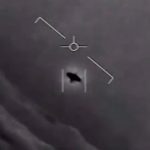Key Takeaways:
- A recent image from the European Southern Observatory reveals a captivating cosmic phenomenon resembling a flower.
- The image is a result of gravitational lensing, where a foreground galaxy bends and magnifies light from a hidden galaxy behind it.
- This creates multiple distorted images of the background galaxy, forming a cross-like or flower-like pattern, known as an Einstein Cross.
- The galaxies captured in the image belong to the early universe and are situated in the Hercules constellation.
- Cutting-edge technology, the Multi Unit Spectroscopic Explorer, was employed at the ESO’s Very Large Telescope in Chile to capture this celestial marvel.
In a stunning revelation, the European Southern Observatory (ESO) has unveiled a celestial marvel reminiscent of a wildflower in the depths of space. This awe-inspiring image was captured through the powerful lenses of the ESO’s Very Large Telescope (VLT), revealing a distant galaxy encircled by what appears to be four ethereal, light-blue petals.
However, the reality is even more intriguing: the central galaxy acts as a gravitational lens, curving and intensifying the light emanating from a concealed galaxy positioned behind it. Consequently, from our vantage point on Earth, we witness duplicated images of the background galaxy, fashioning the illusion of a ring of delicate flower “petals” encircling the central orange-hued galaxy.
The phenomenon at play here, known as gravitational lensing, provides a unique window into the otherwise concealed realm of distant celestial objects. It occurs when foreground objects bend and distribute the light from background objects along the same line of sight. In this instance, the foreground galaxy has fragmented the light from the background galaxy into four smudges of cerulean luminescence. As ESO officials elucidate, “As a result, we see several images of the distant galaxy, distorted and magnified.” This distinctive alignment of the two galaxies forms a cross-like, or flower-like, pattern, earning it the moniker of an Einstein Cross.
The galaxies featured in this arresting image hail from the early stages of the universe, finding their abode in the Hercules constellation. The breakthrough was made possible through the application of the Multi Unit Spectroscopic Explorer (MUSE) instrument affixed to the ESO’s VLT stationed in Chile.
MUSE employs a remarkable technique, dispersing the incoming light from every point within its purview into a spectral spectrum, revealing a wealth of information. Notably, the central galaxy within this cosmic flower exhibits a reddish hue, indicating an abundance of aging stars. In contrast, the distant galaxy is a cradle of stellar birth, radiating a vibrant blue glow.
This celestial ballet offers more than mere aesthetic splendor. Light from the distant galaxy departed eons ago, when the universe was but a fifth of its current age. Thus, its study holds invaluable insights into the genesis of galaxies during the universe’s formative epochs. Additionally, the universe’s expansion imparts a reddish tint to remote galaxies, a phenomenon observable here.
However, the four images of the distant galaxy, due to the prevalence of youthful stars, gleam in a vivid blue hue. These groundbreaking findings were unveiled on August 8 in The Astrophysical Journal Letters, marking a significant stride in our understanding of the cosmos.


